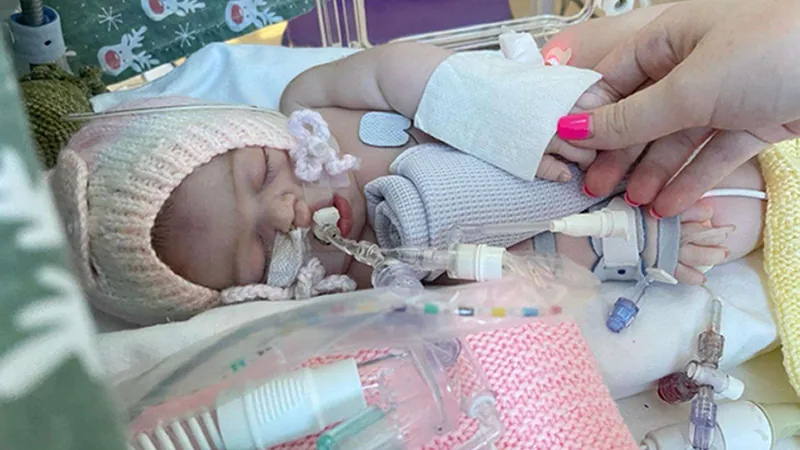
Revolutionary Treatment Sparks Hope for Babies with Rare Condition
2025-08-27
Author: Li
From Tragedy to Triumph for Amelia Turner
In an astonishing turn of events, the mother of baby Amelia Turner is celebrating groundbreaking research aimed at tackling her daughter’s rare and life-threatening condition. Just days after birth, Amelia underwent critical surgery at Great Ormond Street Hospital (GOSH) due to severe congenital diaphragmatic hernia (CDH)—a condition that affects just one in every 3,000 infants.
Understanding Congenital Diaphragmatic Hernia (CDH)
CDH occurs when the diaphragm, the muscle that separates the chest from the abdomen, fails to develop properly. This disastrous condition allows abdominal organs to invade the chest cavity, squishing precious developing lungs and leaving babies without the space they need to flourish.
A Rollercoaster Journey for Amelia's Family
For Georgia Turner, 26, from London, learning about her baby’s condition was nothing short of a whirlwind. "The medical team initially hoped that Amelia's condition would be moderate, but things turned dire after her birth when we learned that her bowel and stomach had shifted into her chest," she recalled. The brave little fighter spent four grueling months in GOSH's neonatal unit, followed by another three months in her local hospital, before finally being able to go home.
Towards a Brighter Future: Innovative Research at the Helm
Amelia, now a spirited 17-month-old, recently faced a second surgery when her CDH reoccurred at 15 months. However, a new wave of research holds promise for improving treatment outcomes dramatically. This innovative approach aims to make interventions less invasive and bolster survival rates while simultaneously reducing the risk of relapses.
Science Fiction Meets Reality
Experts from GOSH, University College London, and KU Leuven in Belgium are pioneering an advanced treatment system that could revolutionize how CDH is managed. Imagine using nanodiamonds to deliver a vital hormone, vascular endothelial growth factor (VEGF), directly into the fetus while it’s still in the womb. This hormone can stimulate lung growth—a game-changer for babies battling CDH.
Early tests on lab-grown mini-lungs and affected rats have shown promising results. Dr. Stavros Loukogeorgakis, a GOSH surgeon, expressed enthusiasm about the potential breakthrough, stating, "The combination of nanodiamonds, 3D-printing, and in-womb growth hormones sounds like science fiction, but this research is uncovering real possibilities for the future."
A Hopeful Outlook for Families
Incredibly, this pioneering treatment could be available to families within five years. Georgia Turner reflected on the importance of such advancements, saying, "It's encouraging to see experts striving for more effective and less invasive treatments for CDH. I hope that these better methods will also help prevent relapses like Amelia's."


 Brasil (PT)
Brasil (PT)
 Canada (EN)
Canada (EN)
 Chile (ES)
Chile (ES)
 Česko (CS)
Česko (CS)
 대한민국 (KO)
대한민국 (KO)
 España (ES)
España (ES)
 France (FR)
France (FR)
 Hong Kong (EN)
Hong Kong (EN)
 Italia (IT)
Italia (IT)
 日本 (JA)
日本 (JA)
 Magyarország (HU)
Magyarország (HU)
 Norge (NO)
Norge (NO)
 Polska (PL)
Polska (PL)
 Schweiz (DE)
Schweiz (DE)
 Singapore (EN)
Singapore (EN)
 Sverige (SV)
Sverige (SV)
 Suomi (FI)
Suomi (FI)
 Türkiye (TR)
Türkiye (TR)
 الإمارات العربية المتحدة (AR)
الإمارات العربية المتحدة (AR)